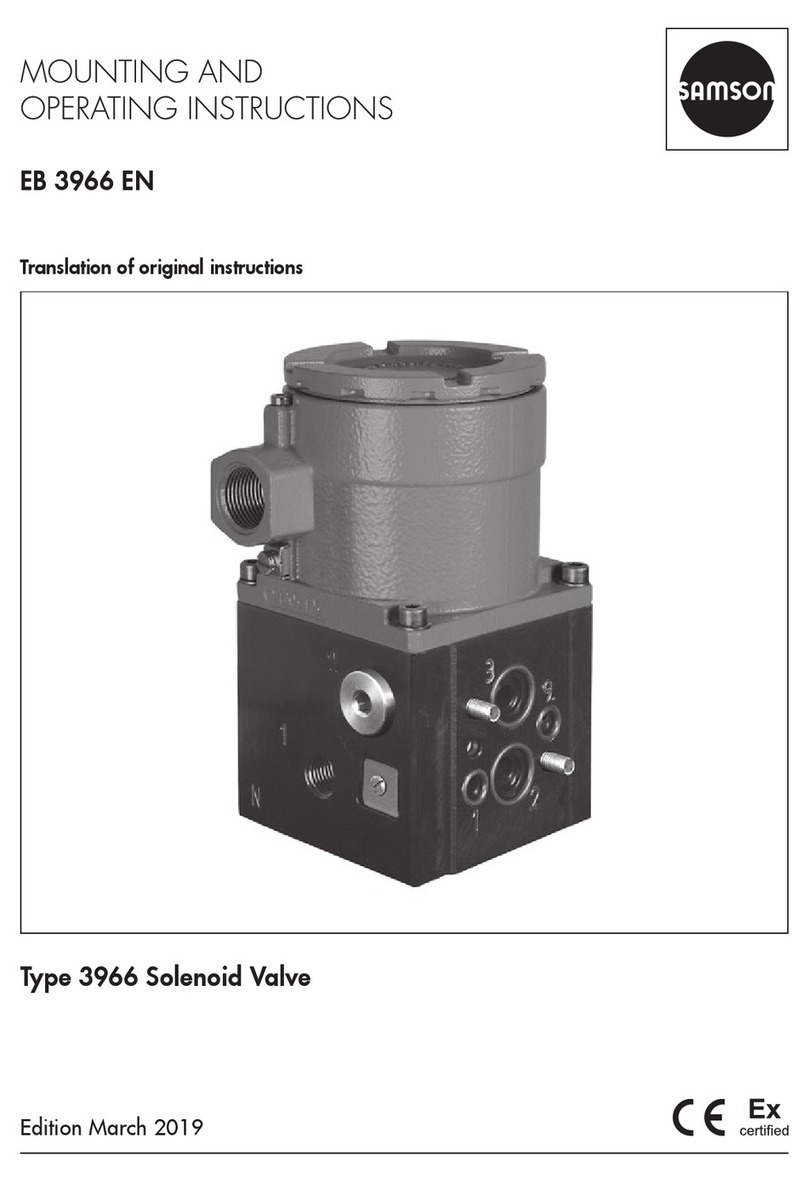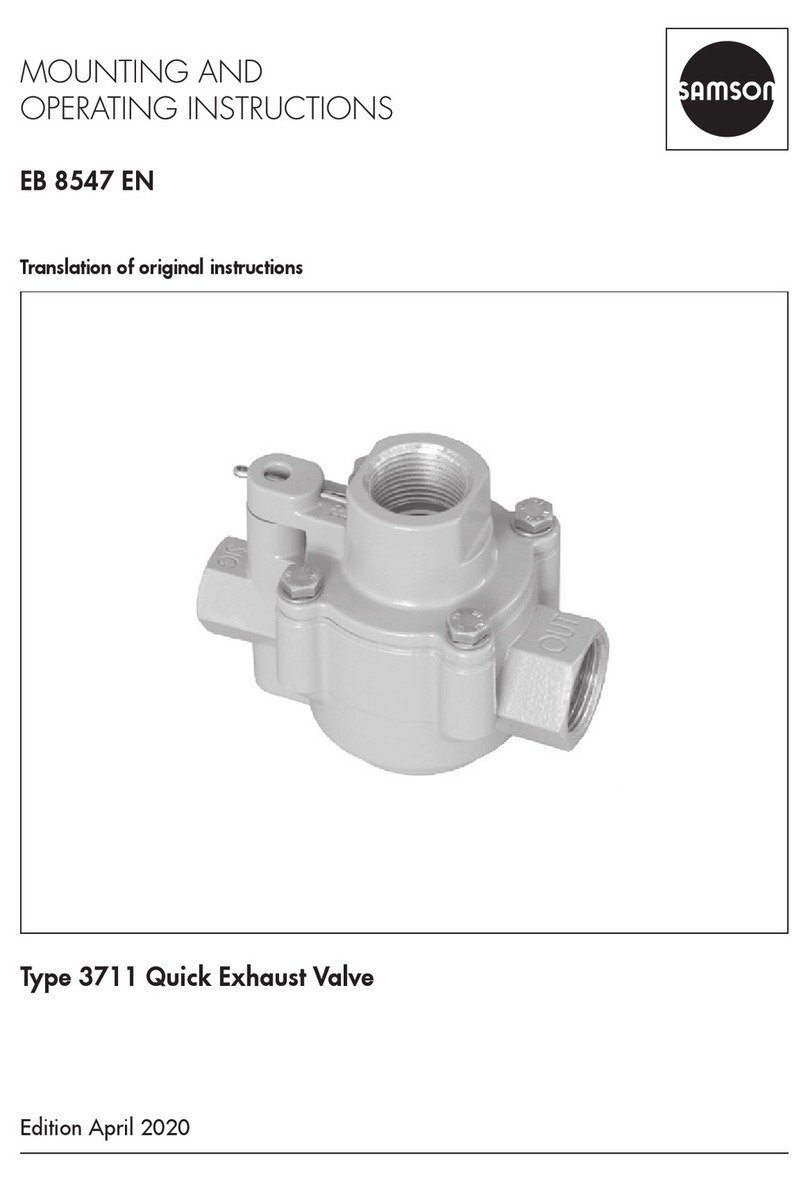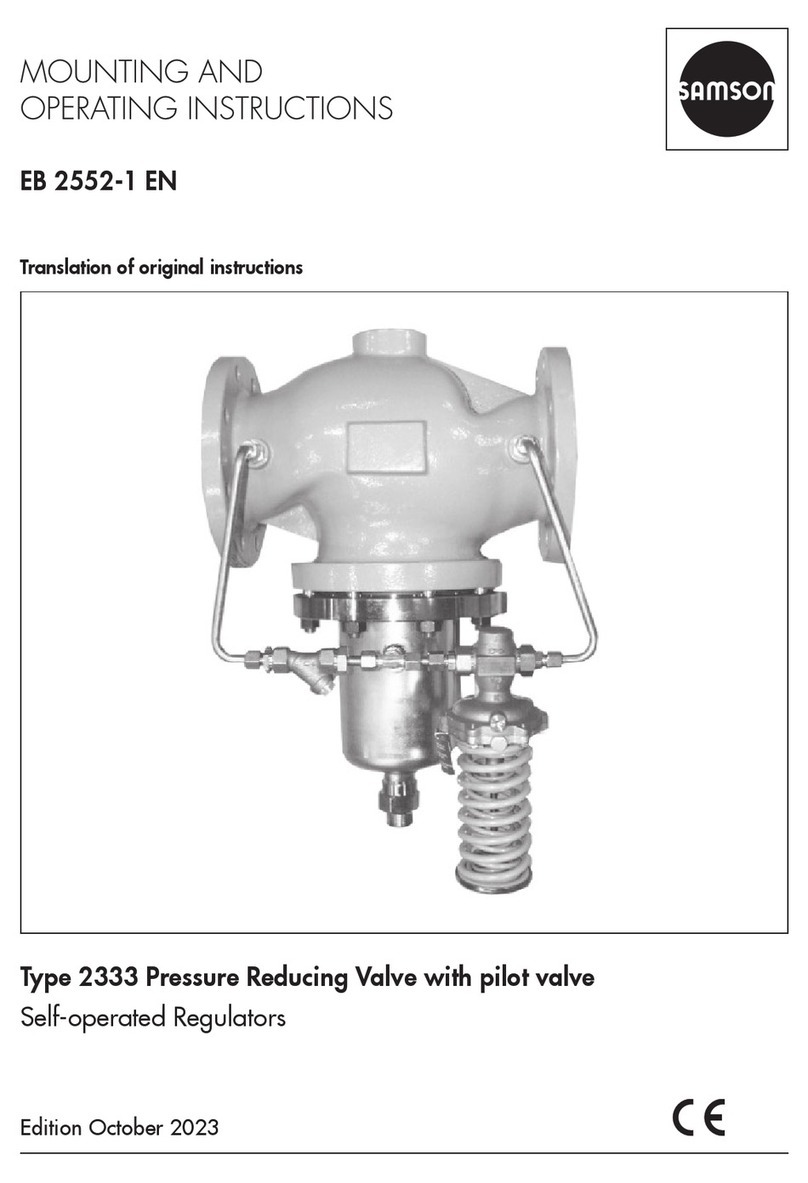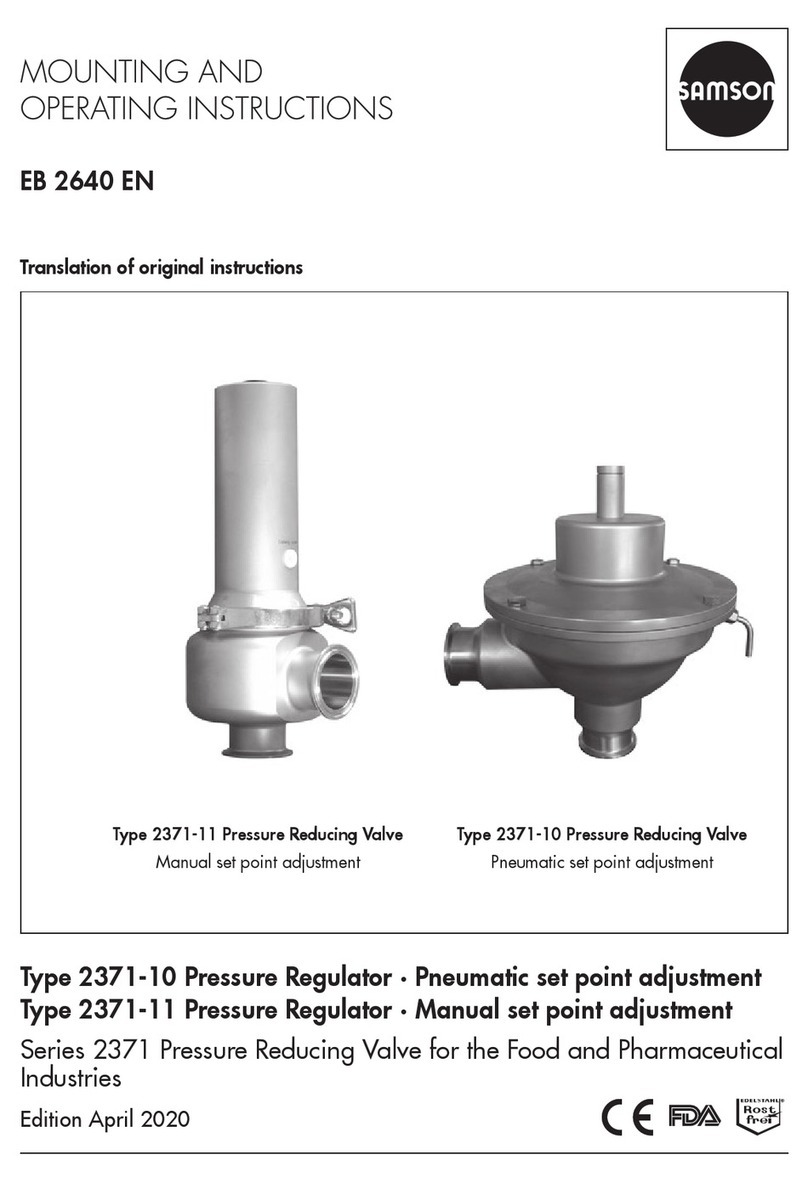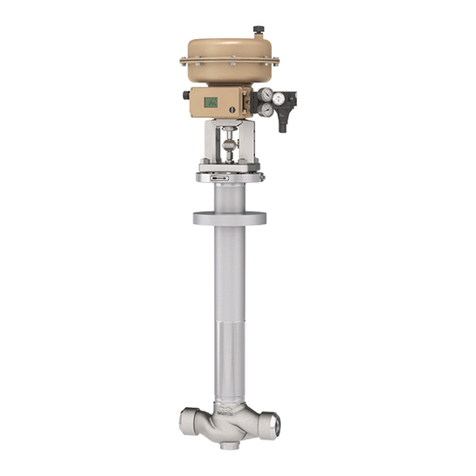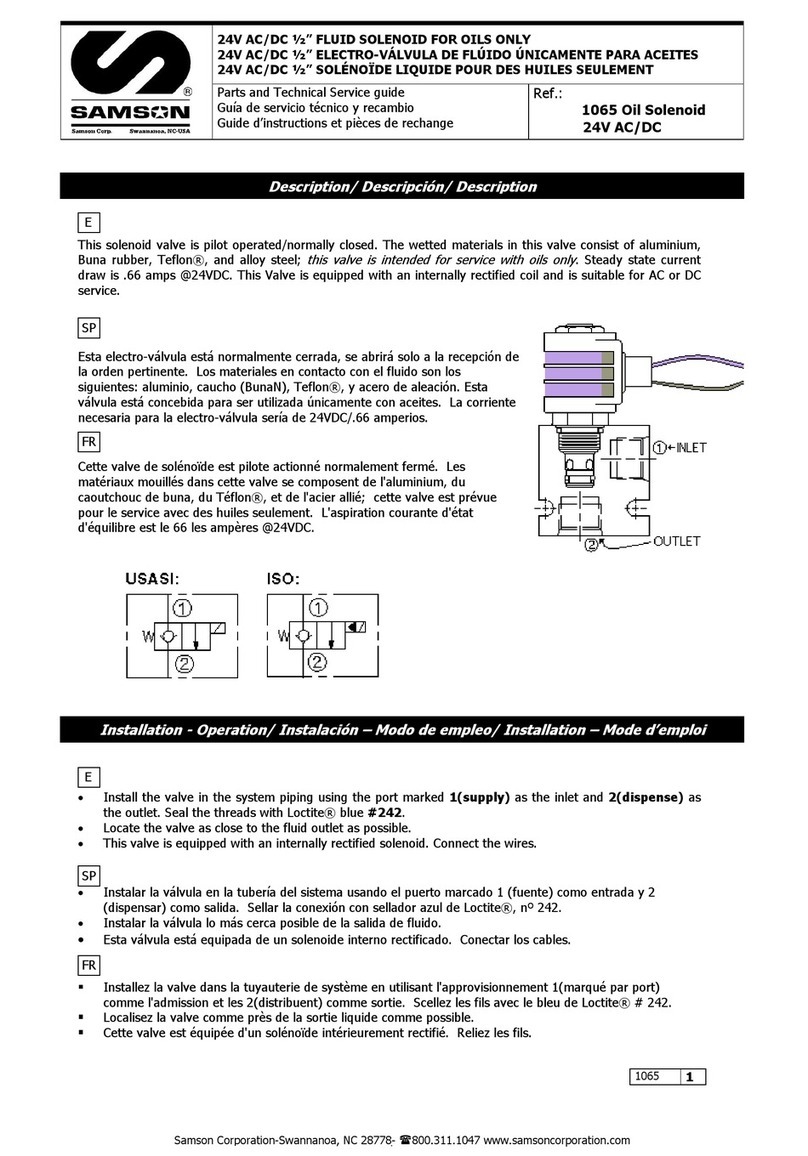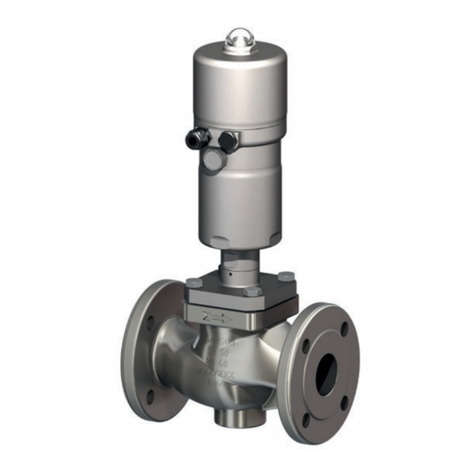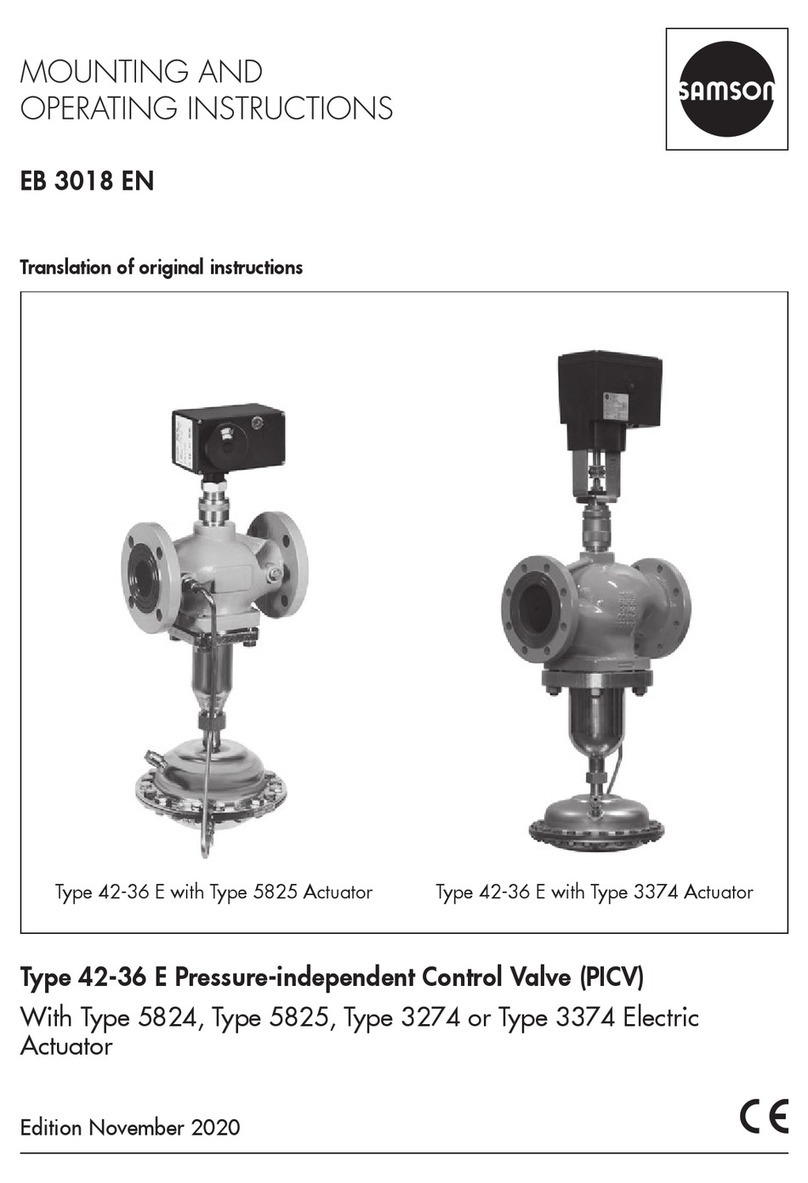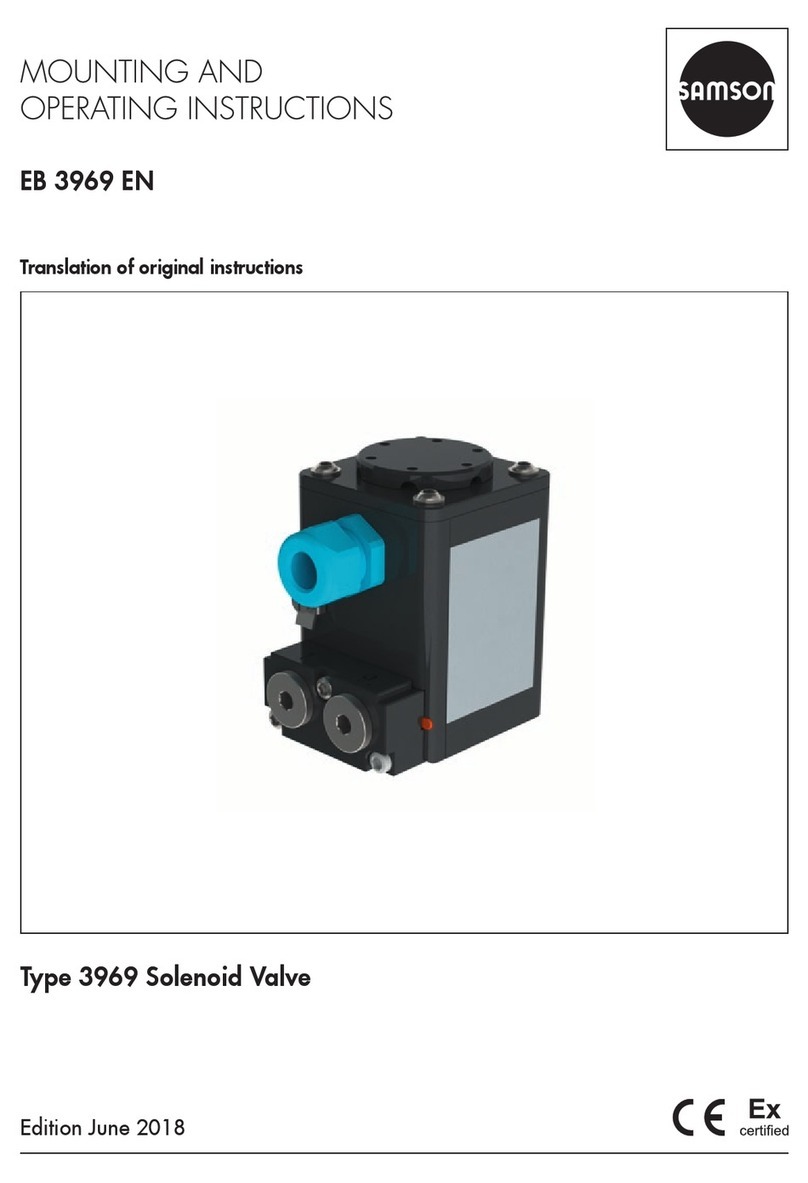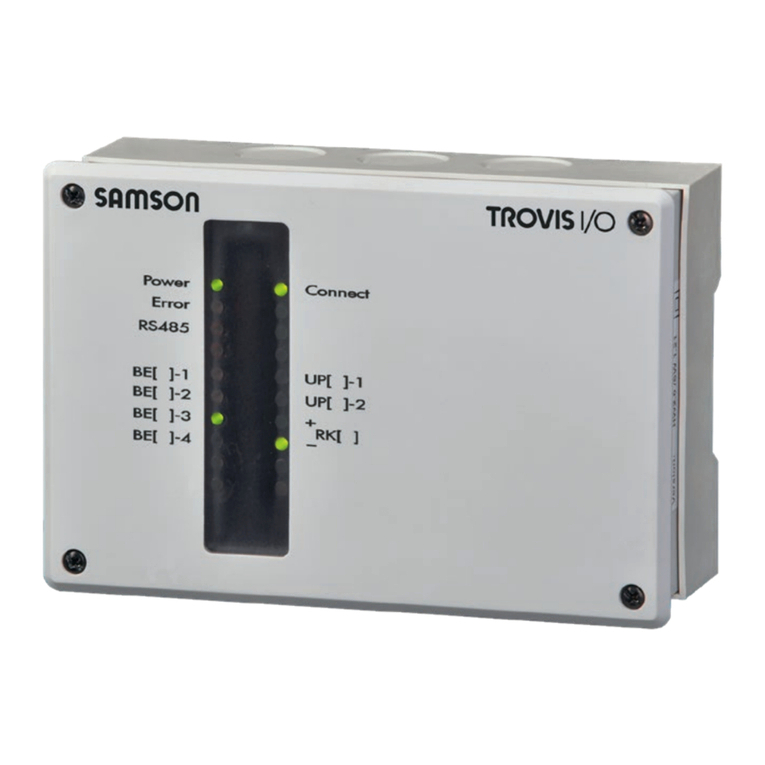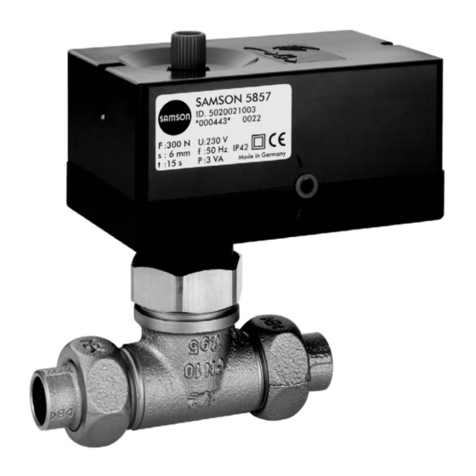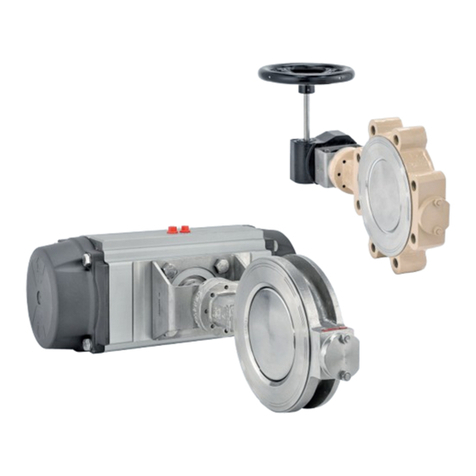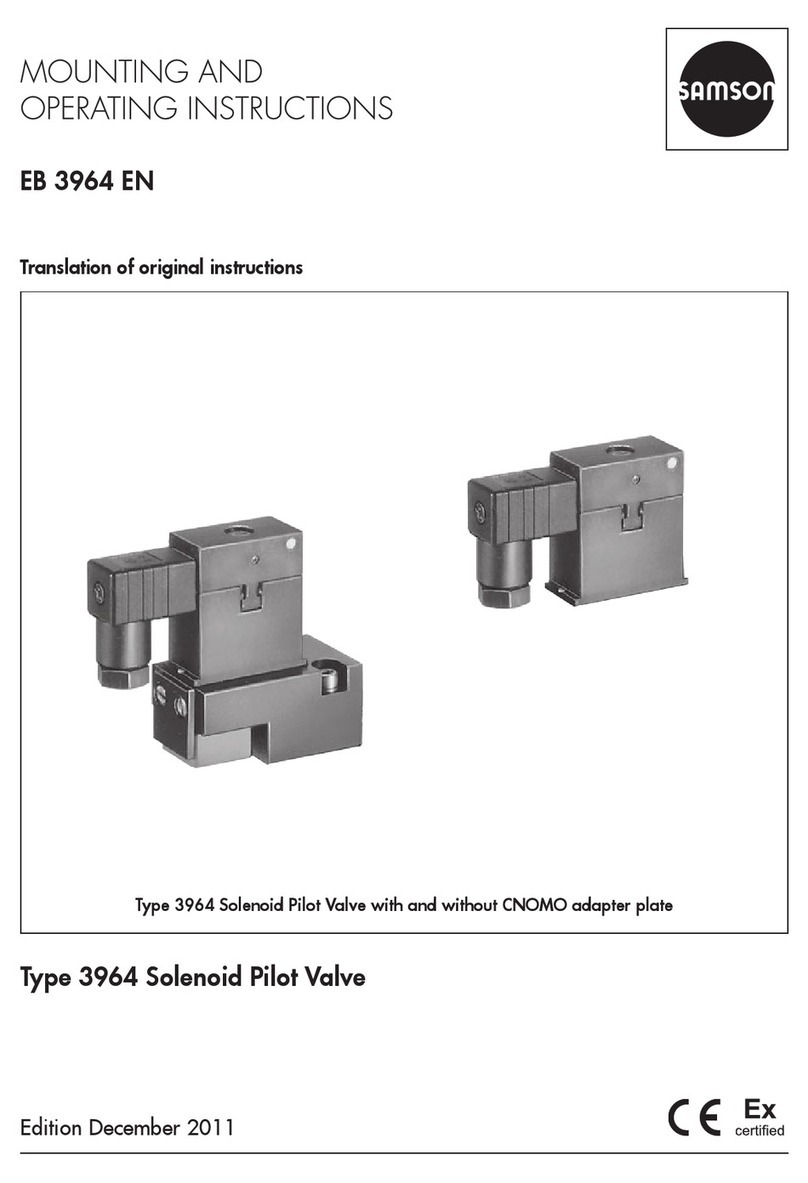
EB 8048-2 EN 9
Connection between valve and actuator
Valve/nominal size Dimension
X
Standard valve/Micro-ow valve
DN 6 to 25 · NPS ¼ to 1 67.5 mm
DN 32 to 50 · NPS 1¼ to 2 75 mm
2. Remove the clamps of the stem connector
(7) and ring nut (8.2) from the actuator.
Slide the ring nut over the plug stem.
3. Read the bench range (e.g.0.2 to 1bar
or 0.6 to 1bar) and the actuator's fail-
safe action (e.g. actuator stem extends)
from the actuator's nameplate.
The fail-safe action "actuator stem extends"
or "actuator stem retracts" is marked by FA
or FE on the Type3271 Actuator, and by a
corresponding symbol on the nameplate of
the Type3277 Actuator.
The lower value corresponds to the lower
bench range value to be adjusted, whereas
the upper value corresponds the upper
bench range value.
4. For actuators with "actuator stem ex-
tends" fail-safe action, apply a signal
pressure that corresponds to the lower
bench range value (e.g. 0.2 or 0.6bar)
to the connection on the bottom dia-
phragm chamber. For actuators with "ac-
tuator stem retracts" fail-safe action, ap-
ply a signal pressure that corresponds to
the upper bench range value (e.g. 1bar)
to the top diaphragm chamber connec-
tion.
5. Place the actuator onto the valve bonnet
(5) and secure it with the ring nut (8.2).
6. Position clamps of the stem connector (7)
and screw them tight. Align travel indica-
tor scale (5.5) with the tip of the stem
connector; for actuators with "actuator
stem extends" fail-safe action align it
with lower marking (valve closed) and
for actuators with "actuator stem retracts"
fail-safe action align it with top marking
(valve open).
Note:
When removing an actuator with
"actuator stem extends" fail-safe ac-
tion and especially an actuator with
preloaded springs, apply a signal
pressure that is slightly higher than
the lower bench range value (see ac-
tuator nameplate) to the bottom load-
ing pressure connection so that the
ring nut (8.2) can be unscrewed.
4.2 Option of preloading
springs for "actuator stem
extends" fail-safe action
To achieve a greater positioning force, the
springs of the actuators can be preloaded by
up to 12.5% of their travel or bench range
(with 350 cm² up to 25% of their travel or
bench range).
When a preload of, e.g. 0.1bar, is desired
for a bench range of0.2 to 1bar, the lower
bench range value is shifted by 0.1bar to
0.3bar (0.1bar correspond to a preload of
12.5%).
When adjusting the valve, now apply a pres-
sure of 0.3bar as the lower bench range
value. Write the new bench range with pre-
loaded springs of0.3 to 1.1bar on the
nameplate.
